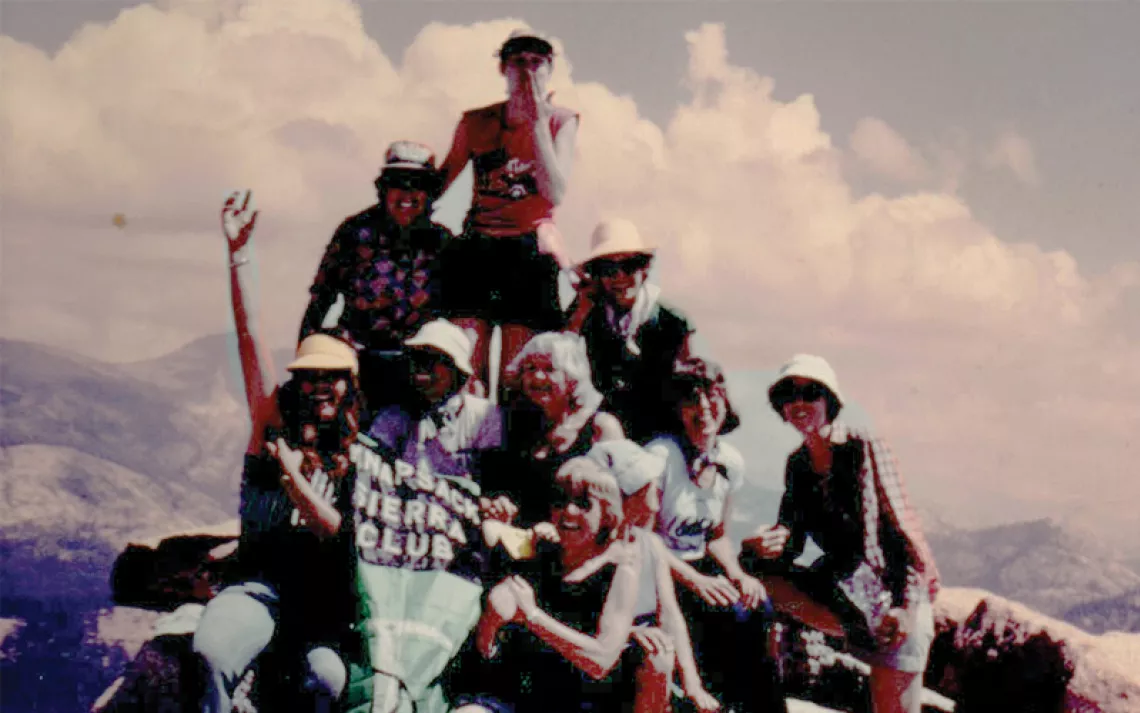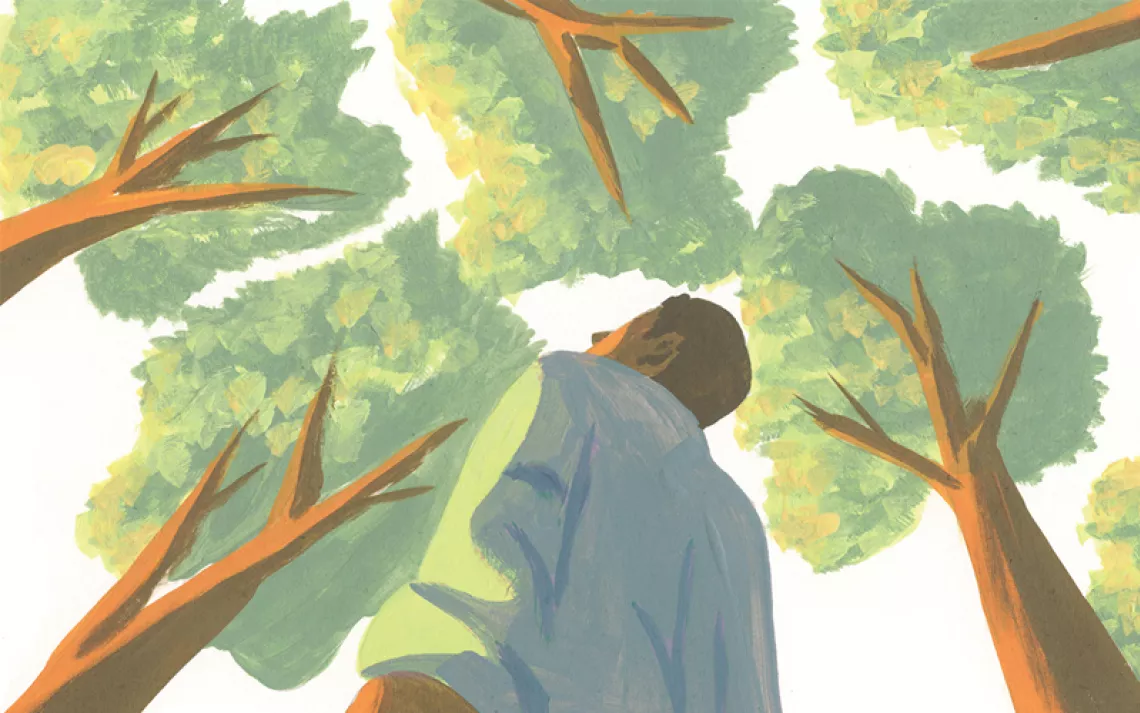The People of Color Who Keep Outdoorsy Towns Running
They are often the backbone of the outdoor recreation industry

Photo by AleMoraes244
When Pedro Figueroa was eight years old, he used to join his mom in cleaning condos around Mammoth Lakes—a popular ski-resort town in California’s Eastern Sierra. His father had immigrated to the town as a teenager with only $20 in his pocket and over time was able to open an auto shop. Figueroa grew up attending Mammoth Lakes public schools and was the first in his family to graduate high school. At 26, he now works for the Mono County Department of Social Services, helping other residents of town access services.
Latino families like Figueroa’s are the backbone of Mammoth’s economy and community, constituting over 36 percent of Mammoth’s total population. And yet Latinos are largely missing from leadership positions around town.
“I’m in meetings with town councils all the time, and with few exceptions they never really factor the Latino community in the decision-making progress,” says Matt McClain, the executive director of Mammoth Lakes Recreation. McClain says no Latinos sit on the Mammoth Lakes Town Council, the Mammoth Lakes Tourism Board, the trail council, or the housing board. “I guarantee when I go to another meeting tomorrow,” he says, “it will be all white people between the ages of 45 to 70, a fully homogenous group.”
When you glance at Mammoth’s marketing collateral, advertisements, and websites for outdoor recreation, participants are, again, mostly white. When visiting the town’s ski resorts or hiking on its many trails, participants appear the same.
This is the common dynamic in towns known for outdoor recreation: People of color largely provide the labor that supports the town’s economy and statistically make up a large percentage of its community. Yet rarely do they also hold leadership positions in town.
Hilary Byrne, one of the filmmakers behind The Quiet Force, a recent documentary that tackles this issue, told me that when she interviewed residents of Mammoth Lakes and other ski towns, many weren’t even aware that such a significant Latino population existed.

Sign up to receive Sierra News & Views
Get articles like this one sent directly to your inbox weekly.
With this action you affirm you want to receive Sierra Club communications and may vote on policy designated by the Sierra Club Board.
“When we tell them that their town is almost 40 percent Latino, many say, ‘Really? I had no idea,’ Byrne says. “It was surprising even for people who lived here full-time.”
McClain says that although Mammoth leaders often express intention to create an inclusive environment, they also tend to enact policies that prevent inclusivity. One prominent example: companies hiring people of color exclusively for positions in which they can’t be seen.
“In Mammoth, when you go to sports shops, the person selling you $700 ski boots or talking to fishermen about fishing equipment is never a person of color,” says McClain. “They’re working in the back. When you go to restaurants, you see them cooking but never at the front desk. It’s the same in hotels.”
Many people of color I interviewed in Mammoth confirmed that this is a common dynamic: Service workers of color end up relegated to “back of house” jobs where the mostly white and wealthy clientele can’t see them. Meanwhile, many white service workers get assigned the “guest-facing” jobs that often offer more in terms of tips and commissions.

“That builds up resentment and reinforces stereotypes,” says McClain. “I don’t want to believe these owners think they’re going to lose sales if they put a person of color selling those boots. These are progressive people. But then, this continues happening.”
While visiting Mammoth Lakes with a friend last November, I interviewed four Latina women who worked as hotel cleaners. Many commented on the unfair treatment of Latino workers as compared to white workers: Their boss, they said, often rushes the Latino workers, scolds them whenever they take a break, and gives warning if they ever leave a plate in the staff lounge or miss a spot while dusting. But when these Latina workers observe their white counterparts taking a walk in the middle of the day, or making a small mistake, they don’t see their bosses holding them to the same standard.
“With the Americans, they aren’t as strict as they are with us, because they know that if they tell them something, they’ll leave and they won’t come back,” one told me, on the condition of anonymity. “They know we’re not going to leave because we’re undocumented and we need the work. In every place I’ve worked here, it feels that way.”
Immigration is another hot-button issue in which there can be a disconnect between town leaders’ intentions and the experience of communities of color on the ground. In general, leaders in many outdoor recreation towns have expressed a desire to work with undocumented communities in productive ways. In an editorial for Outside magazine, Rob Katz, CEO of Vail Resorts, admitted these towns need progressive immigration reform to keep their businesses running. But as the women I spoke to confirmed, a willingness to hire undocumented workers and advocate politically on their behalf does not always translate to equal treatment.
As someone who experienced the effects of immigration policies firsthand, Figueroa also knows just how severely these policies can impact a family’s well-being. He remembers being placed in a detention facility at the age of four with his mother and sister, who was two years old. The family stayed there for days until Figueroa became so ill by dehydration that he was taken to the hospital for treatment. Ultimately, his deteriorating health led to immigration officials letting his family go. In sixth grade, his entire family was given a notice of deportation. Later, in high school, his best friend since childhood was deported back to Mexico and never came back.
“When I watch the news now, of course I think about this. I’ve actually been there,” Figueroa told me. “So I know these kids are going to be scarred for the rest of their lives.”
To better address these kinds of situations, municipal leaders can learn from groups like Somos Uno, a group founded by Spanish-speaking immigrants in Telluride, Colorado, that serves to help Latino community members gain the skills and resources they need to organize politically and voice their concerns about immigration, work discrimination, and other issues relevant to their community. Somos Uno members offer “know your rights” workshops to undocumented community members in an attempt to help them understand their options if confronted by immigration officials. Last June, they also advocated for the town council to sponsor “implicit bias training and racial sensitivity training for town employees.”
These issues also illustrate why towns need to have concrete, intentional strategies in place for increasing representation of these communities in positions of power. In his role with the Mono County Department of Social Services, Figueroa has noticed how such efforts make a difference. Before he began working there, due to language and cultural barriers, many families rarely used social services. Since many families were undocumented, several also hesitated to contact government agencies in general, for fear of getting deported. But now that many in the community know that Figueroa and a few other Latinos work within the government, he’s noticed more folks from the community coming forward with questions and concerns.
Aracelli Escobar, a first-grade teacher at Mammoth Lakes Elementary, also notices a difference when working with her students’ parents. Though 62 percent of students at the school are Latino, only two out of the school’s 28 teachers share their background.
“When I talk to the Latino moms, as soon as they see that I speak Spanish and I am a person of color, you can see the relief in their eyes,” Escober told me. “That’s what they’re more comfortable with.”
However, finding people of color to take on leadership positions within the community has proven difficult. For the last two years, Mammoth Lakes Recreation has been holding a seat open on its board specifically for someone who can represent the Latino community. McClain told me that he and the nominating committee put in many hours trying to cultivate candidates with no success. He has seen other NGOs in the community experience similar challenges.
Many residents I spoke with argued that any attempt at becoming more inclusive won’t work if not paired with efforts to address economic inequality. None of the folks I spoke to working as hotel cleaners were offered health insurance, retirement benefits, or paid vacation as part of their work. The long waitlist for affordable housing in Mammoth has also caused many Latinos to move outside of town in pursuit of cheaper places to stay.
Every person I interviewed expressed concern about managing to afford living in Mammoth Lakes, even while working multiple jobs. In addition to his full-time position with the county, Figueroa works a restaurant job to cover his expenses. During certain periods of his career, Figueroa recalls working for the county, at a restaurant, and shoveling snow from roofs and roads during the winter.
“For the Latinos that work for the county, other Latinos in Mammoth Lakes look at us as ‘the people that made it, the people that lived the American Dream,’” Figueroa told me. “But little do they know that we’re working three jobs just to make ends meet ourselves.”
Erasure can happen daily in a variety of ways, but it’s often subtle forms of erasure that create this dynamic in towns like Mammoth—where many say they support communities of color, yet where economic and political systems are still built in ways that can keep these communities on the margins. In order to truly create change, McClain argues, these issues have to be addressed all together, and consistently.
“This isn’t going to be solved with one workshop. It has to be constant,” McClain told me. “We have to change the entire lifestyle here.”
 The Magazine of The Sierra Club
The Magazine of The Sierra Club



